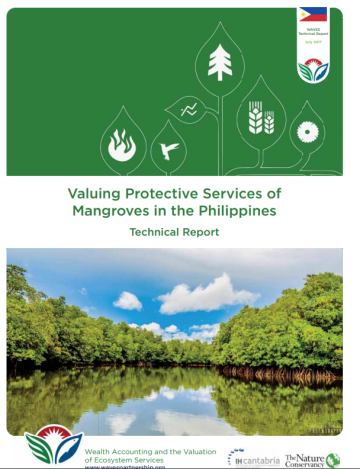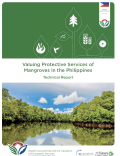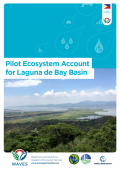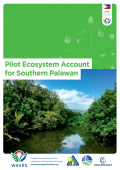
Mangroves and other coastal ecosystems act as natural defences that protect people and property from storms, floods, erosion, and other coastal hazards, reducing coastal risk. Mangroves protect coastlines by decreasing the risk of flooding and erosion. The roots of mangroves retain sediments and prevent erosion, while the prop roots, trunks and canopy reduce the force of incoming wind and waves and reduce flooding. The Philippines has lost hundreds of thousands of hectares of mangroves in the last century. When mangroves are degraded or destroyed, the coastline becomes more exposed to the destructive impacts of waves and storm surge, and coastal communities face greater risks from the impacts of storms, floods, and sea level rise. The Philippines is at high risk from coastal hazards and natural defences can help reduce these risks.
This Technical Report, Valuing Protective Services of Mangroves in the Philippines: Technical report, provides a social and economic valuation of the flood protection benefits from mangroves in the Philippines. This work aims to support decisions across development, aid, risk reduction, and conservation sectors as they seek to identify sustainable and cost-effective approaches for risk reduction. This Technical Report applies the Expected Damage Function approach recommended by the World Bank to quantify the risk reduction benefits from mangroves in the Philippines. Using high-resolution flooding models, the Report examines the flooding that would occur with and without mangroves under different storm conditions throughout the Philippines and estimates the annual expected benefits of mangroves for protecting people and property in social and economic terms.



